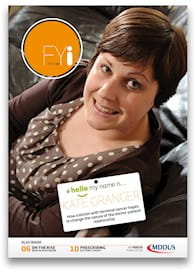MARK Twain said: “Good judgement comes from experience,” but added, “experience comes from bad judgement”. He knew the value of “mistakes” – indeed he refused to recognise them as such. “There are no mistakes in life,” he said, “there are only lessons to be learned.”
Mistakes, or at least the happy accidents of serendipity, have informed and shaped medicine just as they have had a hand in the development of most human endeavour. There are many examples where the consequences of our errors have led to medical breakthroughs, and by examining them we can learn an important lesson on the nature of discovery. Here are just three examples from very different areas of medicine.
Ambroise Paré was a French barber-surgeon who spent much of his career in military medicine. On the battlefield, it was standard practice in his day to cauterise a soldier’s wounds with boiling oil. Gunshot wounds, a relatively recent problem on the 16th century battlefield, were believed to be poisonous and had to be treated, purged and sealed.
In 1536, while serving under Francis I at the Siege of Turin, he used this technique until he ran out of the necessary oil. In an attempt to cleanse and seal the soldiers’ wounds, he mixed a cocktail of egg yolk, oil of roses and turpentine and applied this instead. The next day, he was surprised to discover that while the wounds of those soldiers treated in the conventional way were, as expected, swollen, red and painful, those who had received his makeshift therapy were in better condition (because of the turpentine’s antiseptic properties).
Forced to reach for an alternative treatment because the standard one was simply unavailable meant Paré had opened a new chapter in wound care. He went on to publish this revolutionary treatment of gunshot wounds in his Method of Treating Wounds in 1545 and changed medical practice.
Alexander Fleming accidentally contaminated his petri dishes, perhaps by leaving them by an open window. The penicillium that found its way onto his plates might have come from mould spores from beer in the Fountains Abbey Ale House across the road from his lab in St. Mary’s Hospital, London. At least, a hopeful plaque outside the pub in question claims Sir Alexander as “a loyal regular” and takes credit for its part in the discovery of penicillin in 1928. Whatever the source, this was a mistake that, when understood, led to the advent of the antibiotic era.
The treatment of diabetes also owes its origins to serendipity. The pancreas was only discovered to be involved in the control of blood glucose by accident. The German physicians Joseph von Mering and Oscar Minkowski removed the pancreas from a healthy dog in 1889. Afterwards, they noticed that the urine of the unfortunate animal was attracting flies. This was because the dog had developed diabetes due to insulin deficiency and was passing large amounts of sugar in its urine. This discovery set the scene for Frederick Banting and his research team in Toronto to discover the pancreatic hormone insulin 32 years later and to revolutionise the treatment of diabetes.
Accidents and mistakes will always happen, at least when people are involved, but the thread that binds these three stories together is one of observation. If, in the chaos of the frontline hospital, Paré had not taken the time to examine his patients and to recognise the results of his accidental experiment, he would likely have resorted to the use of boiling oil as soon as a fresh supply became available. Had Fleming simply discarded his contaminated plates without pausing to examine the halos of inhibited bacterial growth around the mould, and if he had not asked why such a thing had happened, we would not have had penicillin. And, if the flies buzzing around that puddle of dog urine had gone unnoticed and unquestioned by von Mering and Minkowski, the discovery of insulin and the subsequent transformation in the treatment of Type 1 diabetes would have taken much longer.
Happy accidents can lead to discovery, but they are only fortunate if the insights they offer are noticed and acted upon by scientists. Every day in every lab and every clinic in the world, serendipity holds out its hand and offers us new knowledge. But we need the wit to realise it and those who do are special. The physiologist Albert Szent-Gyorgi, who won the 1937 Nobel Prize in Medicine or Physiology for his work on Vitamin C and the citric acid cycle, realised this. He said: “Discovery consists in seeing what everyone else has seen and thinking what no one else has thought.”
It is this simple attribute that separates the great scientists from the run of the mill – that allows paradigm-changing discoveries to be made based on the simplest of observations in those experiments designed for us by serendipity.
“Mistakes,” said James Joyce, “are the portals to discovery.” What door might we open today?
Dr Allan Gaw is a clinical researcher and writer in Glasgow
This page was correct at the time of publication. Any guidance is intended as general guidance for members only. If you are a member and need specific advice relating to your own circumstances, please contact one of our advisers.
Read more from this issue of FYi

Save this article
Save this article to a list of favourite articles which members can access in their account.
Save to library